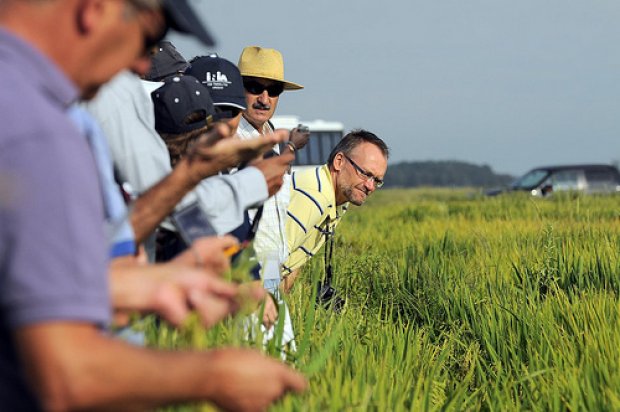
by Emily Boone
A new focus issue of the journal Environmental Research Letters explores the current state and near-term potential for improved quantification of agricultural greenhouse gases. Together the articles in this issue provide a vision for an improved system for quantifying greenhouse gas (GHG) emissions in agriculture, with special attention to the needs of smallholder agriculture in developing countries.
The world’s population is growing rapidly: an estimated eight billion people by 2030, nine billion by 2050. Feeding the world sustainably requires balancing a growing population’s food and nutritional needs while limiting the greenhouse gases released by agriculture—a growing contributor to climate change. We cannot make informed decisions to achieve this balance without accurate data on agricultural greenhouse gas emissions at the local, national and international level.
Because developing countries must increasingly identify and report emissions to access climate financing incentives or carbon markets, an inability to produce accurate and consistent data eliminates potential revenue for countries that need it most. At the national level, countries with policies to reduce emissions and expand sustainable agriculture practices will only benefit if they can monitor these emissions.
The first set of articles in the special issue by N.J. Berry and C.M. Ryan, C. Lloyd et al., D. Lobell et al., L. Olander et al., D. Signor et al., A. M. Silva-Olaya et al., F. Tubiello et al., and T-G Vågen et al. synthesize the current state of GHG quantification methods and propose innovations for policy makers in developing countries who seek accurate and cost-effective methods to report on GHG stocks and emissions. These innovations include:
- Improving field measurements for soil carbon. The amount of carbon in soil is a key indicator of agricultural emissions. Vågen et al. found that remote sensing data when calibrated to field data (measurements of soil mass) can be used to estimate soil carbon on a landscape scale measured as soil organic carbon or SOC. This provides a significant improvement over current approaches when quantifying soil carbon on larger scales, which could improve estimates of carbon storage and lead to mitigation that is better targeted geographically.
- Investing in agricultural adaptation. Making sure agricultural production is resilient and well adapted to climate change is a key aspect of maintaining or enhancing food production. Lobell et al. found that broad-based efforts to adapt agriculture to climate change have mitigation co-benefits that are inexpensive relative to activities focused solely on mitigation. The results challenge most existing climate financing portfolios, which support adaptation funds separately from mitigation.
- Improved agricultural GHG data systems. Tubiello et al. present trends in GHG emissions from the agricultural sector and net deforestation using a new emissions factor database developed at FAO. They show how agricultural emissions increased from 2000 to 2010, and that emissions from agriculture have been consistently larger than those from net deforestation.
- Low-cost GHG quantification. Lloyd et al. review current methodologies for measuring GHG emissions from agricultural wetlands. The authors provide guidance on the development of robust estimates of carbon sequestration and GHG emissions in agricultural wetlands through the use of low cost reliable and sustainable measurement, modeling and remote sensing applications.
Together these articles demonstrate how targeted investments in improved soil carbon measurements, adaptation to climate change, improved GHG data systems, and low-cost GHG quantification methods could result in dramatic and quick improvements in GHG reductions, while also meeting global food needs.
The focus issue is sponsored by the CGIAR Research Program on Climate Change, Agriculture and Food Security (CCAFS) and Duke University’s Nicholas Institute for Environmental Policy Solutions, with support from the David and Lucile Packard Foundation and the Food and Agriculture Organization (FAO) of the United Nations.
Read More: Click here for a link to all the articles








